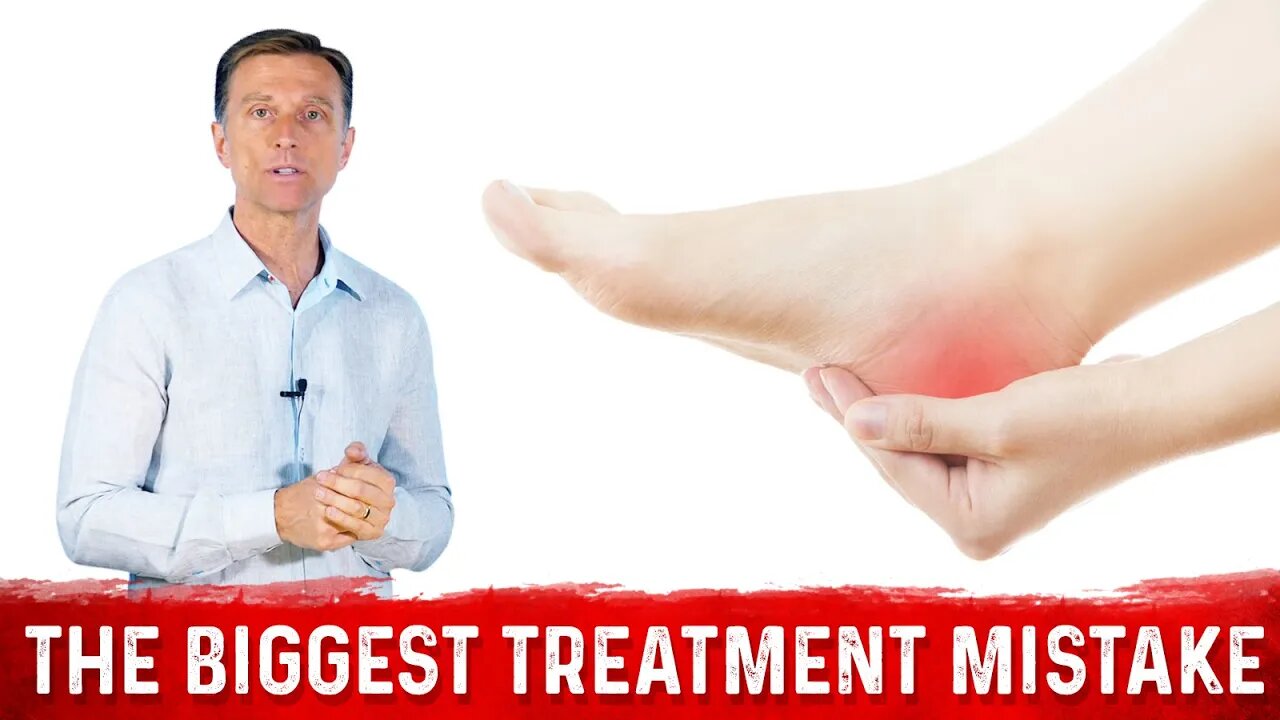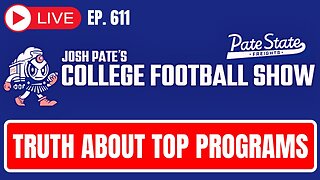Premium Only Content

Plantar Fasciitis and Heel Spurs: The Biggest Mistake
Do you have plantar fasciitis or heel spurs? Don’t make this huge common mistake!
Find Out More at drberg.com: http://bit.ly/39CqLCM
Timestamps
0:05 What is plantar fasciitis?
0:35 Heel spurs
1:00 The biggest mistake with plantar fasciitis
1:33 Oxalates
2:17 Calcium for plantar fasciitis
2:44 Uric acid
4:00 A few remedies
4:25 Plantar fasciitis stretch demonstration
Today we’re going to talk about one of the biggest mistakes people make when they have plantar fasciitis and heel spurs. I’m also going to show you an effective plantar fasciitis stretch that may help with this condition.
What is plantar fasciitis?
The plantar fascia is a connective tissue sheath right underneath the foot. A lot of times, it can become inflamed, and you’ll feel pain mainly in the heel area, but sometimes in the middle of the foot. You could have micro-trauma going on, or you could also have a build-up of uric acid crystals. You could even have oxalate crystals that are depositing in your foot from certain things that you’re eating.
Some people think that heel spurs are what’s causing their foot pain. But, this is not what’s actually causing the heel pain. There are a lot of people with spurs who don’t have pain, and people with pain that don’t have heel spurs.
One of the biggest mistakes people make with plantar fasciitis is stretching the calf or foot. Stretching this soft tissue when you have micro-tearing can aggravate the tears. The last thing you want to do is stretch something that is torn or irritated.
Oxalates come from certain foods. They can form kidney stones and can deposit in your joints, causing foot pain.
Avoid these high oxalate foods:
• Spinach
• Almonds
• Parsley
• Chocolate
• Peanuts
• Kiwi
You could also try consuming cheese or calcium with the above foods because the calcium will bind with the oxalates and block some of the absorption.
Uric acid can act as an antioxidant when you do fasting. But, it can also lead to gout and arthritis. Something simple you can do is to alkalize the body by consuming more vegetables or by taking potassium citrate.
A few more things you can do:
• Consume lemon or lemon juice (helps counter uric acid and oxalates)
• Take vitamin D ( a really good anti-inflammatory)
• Take stinging nettle root (a great anti-inflammatory)
• ***Definitely try my plantar fasciitis stretch
Talk to a Product Advisor to find the best product for you!
Call 1-540-299-1556 with your questions about Dr. Berg's products. Product Advisors are available Monday through Friday 8am-6pm and Saturday 9am-5pm EST.
* At this time, we no longer offer Keto Consulting and our Product Advisors will only be advising on which product is best for you and advise on how to take them.
Dr. Eric Berg DC Bio:
Dr. Berg, 56 years of age is a chiropractor who specializes in Healthy Ketosis & Intermittent Fasting. He is the author of The New Body Type Guide and other books published by KB Publishing. He has taught students nutrition as an adjunct professor at Howard University. He no longer practices, but focuses on health education through social media.
Follow us on FACEBOOK: fb.me/DrEricBerg
Send a Message to his team: m.me/DrEricBerg
ABOUT DR. BERG: http://bit.ly/2OX3ROA
Disclaimer:
Dr. Eric Berg received his Doctor of Chiropractic degree from Palmer College of Chiropractic in 1988. His use of “doctor” or “Dr.” in relation to himself solely refers to that degree. Dr. Berg is a licensed chiropractor in Virginia, California, and Louisiana, but he no longer practices chiropractic in any state and does not see patients so he can focus on educating people as a full time activity, yet he maintains an active license. This video is for general informational purposes only. It should not be used to self-diagnose and it is not a substitute for a medical exam, cure, treatment, diagnosis, and prescription or recommendation. It does not create a doctor-patient relationship between Dr. Berg and you. You should not make any change in your health regimen or diet before first consulting a physician and obtaining a medical exam, diagnosis, and recommendation. Always seek the advice of a physician or other qualified health provider with any questions you may have regarding a medical condition.
I hope this video helps you better understand plantar fasciitis and heel spurs. Thanks for watching!
-
 6:51
6:51
Dr. Eric Berg
11 days agoTop Foods to STOP Your Cravings
8.43K7 -
 1:36:21
1:36:21
Sarah Westall
8 hours agoViolence Erupting in the Panama Canal, Identifying Enemy Infiltration, Psyops Ongoing w/ Michael Yon
45.9K28 -
 1:56:25
1:56:25
Nerdrotic
11 hours ago $15.18 earnedThe Red Pyramid's Hidden Secrets | Forbidden Frontier #091
56.8K13 -
 2:08:53
2:08:53
vivafrei
19 hours agoEp. 252: Liberals DISQUALIFY Candidate from Race! DOGE Wins & Loses; Rumble Sues BRAZIL! & MORE!
143K243 -
 1:15:12
1:15:12
Josh Pate's College Football Show
10 hours ago $19.53 earnedCFB’s Top 12 Programs | TV Executives & Our Sport | USC Changes Coming | Early Championship Picks
80.4K2 -
 LIVE
LIVE
Vigilant News Network
14 hours agoUK Government BUSTED in Secret Plot to Extract Your Data | Media Blackout
1,732 watching -
 1:03:32
1:03:32
Winston Marshall
3 days ago"War On Children!" The DEMISE Of The West Starts With Schools - Katharine Birbalsingh
119K67 -
 48:02
48:02
Survive History
17 hours ago $8.11 earnedCould You Survive as a Sharpshooter in the Napoleonic Wars?
68.7K3 -
 12:03
12:03
Space Ice
17 hours agoSteven Seagal's China Salesman - Mike Tyson Knocks Him Out - Worst Movie Ever
50.8K17 -
 11:37
11:37
Degenerate Jay
17 hours ago $17.84 earnedJames Bond Needs Quality Over Quantity From Amazon
110K9